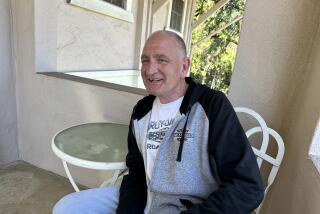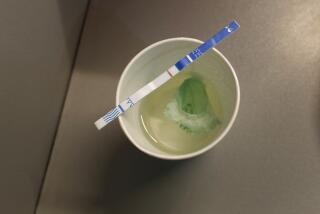Drug Testing Turns Up Positive at Royal, Simi Valley
Kids hang a lot of things in their lockers these days, but at Royal High there’s something unusual next to the Madonna posters: a letter showing that the student’s latest urine test came up negative.
“They put those letters up as a badge,” said Royal Athletic Director Terry Dobbins, who coordinates the high school’s drug-prevention program, one of the most successful in the country.
Begun in 1987 at both Royal and Simi Valley High in the Simi Valley Unified School District, the program was controversial because of fears that constitutional rights would be violated. But safeguards in the program have even led the American Civil Liberties Union to give its tacit approval.
At Royal, the program is offered only to students in extracurricular activities, including athletics, and it is voluntary. A participant submits to a urine test and then can be tested again at random during the school year. But the school doesn’t know who is in the program and it doesn’t get test results--they go directly to the parents.
“We’re not trying to catch people,” said Dobbins, who wrote the program for the district. “We’re trying to help people.”
Of the nearly 1,700 students at Royal, about 1,000 take part in activities, and 94% of them are in the drug program. Of athletes, 97% are in the program. Simi Valley and Royal are thought to be the country’s only high schools currently testing for steroid use (a spectral analysis test to detect steroids is expensive--$180). Players in the sports most inclined toward steroid use--football and track and field--are tested randomly during the year.
In four years, there have been only 12 positive drug tests at the two high schools--all 12 students then went through drug counseling--but equally impressive are the statistics Dobbins put together for another high school that is considering using the program as a model.
Since 1988 at Royal, California Assessment Program scores, SAT scores and reading scores are up along with school attendance. The dropout rate has fallen dramatically, grade-point averages of students in extracurricular activities have risen from 2.87 to 3.01 and the football, basketball and baseball teams have been transformed from perpetual losers into winners.
“It would be simplistic to attribute this just to the drug program,” Dobbins said. “The program works hand in hand with everything else that’s happening at the school.”
More to Read
Sign up for Essential California
The most important California stories and recommendations in your inbox every morning.
You may occasionally receive promotional content from the Los Angeles Times.










